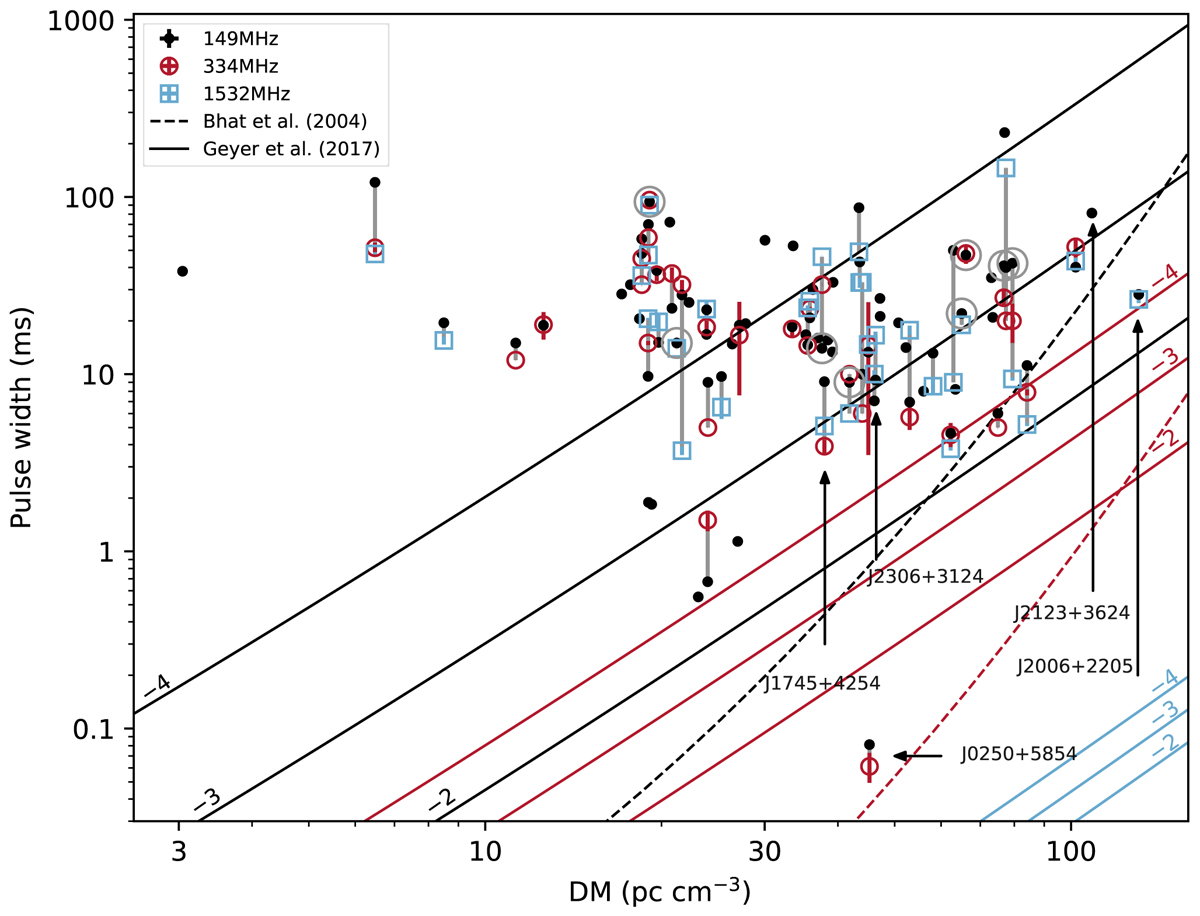Fig. 5.

Download original image
The relations between pulse broadening and DM as found by Bhat et al. (2004; dashed lines) and Geyer et al. (2017; solid lines) at 149, 334, and 1532 MHz in black, red, and blue, respectively. The functions from Geyer et al. (2017) are shown with scattering indices between −4 and −2, while the function from Bhat et al. (2004) is displayed with the best fitting index of −3.68. Shown as dots, circles, and squares are the W50 pulse widths from this study, as well as from the previous LOTAAS reports of Tan et al. (2018, 2020), Michilli et al. (2020) at different frequencies. These measurements represent upper limits on pulse broadening due to interstellar scattering. Pulse widths from the same pulsar at different frequencies are connected with grey vertical lines. The pulsars discussed in Sect. 3.3 are marked with arrows. The pulse widths of eight pulsars at 149 MHz from Michilli et al. (2020) and Tan et al. (2020), which may be affected by scattering, are marked with grey circles.
Current usage metrics show cumulative count of Article Views (full-text article views including HTML views, PDF and ePub downloads, according to the available data) and Abstracts Views on Vision4Press platform.
Data correspond to usage on the plateform after 2015. The current usage metrics is available 48-96 hours after online publication and is updated daily on week days.
Initial download of the metrics may take a while.


